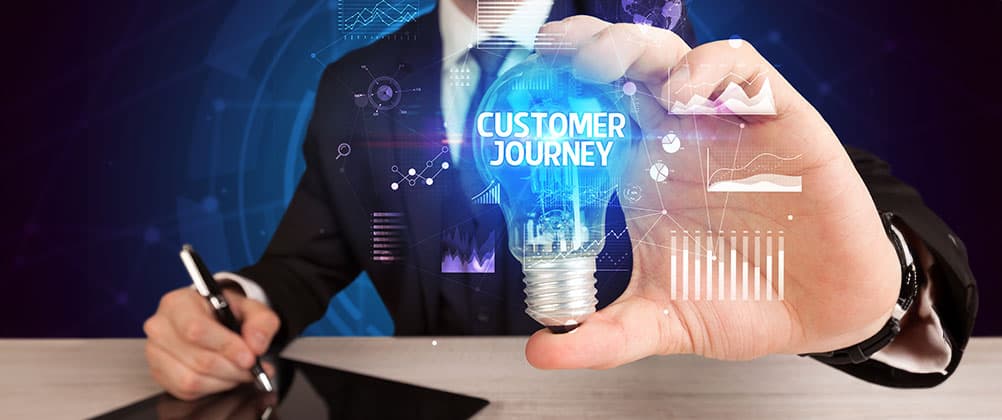The Cornerstone of Customer Education: Setting Powerful Training Objectives

What is customer education?
Customer education receives far too little attention in today’s business sector. Many firms (particularly software providers), irrespective of creating more technologically complex and inventive goods, occasionally leave customers perplexed. Customers will be unable to perceive a product or service’s worth if they are not informed of its applications and benefits.
Customer education, often known as “consumer empowerment,” can be attained by developing an organized education program to help customers grasp a product’s or service’s value. A successful design and strategy help clients feel welcomed and intrigued, increasing usage rates and satisfaction. A well-planned education program allows you to follow and guide your clients from the start while preparing them for what may come next. Your product or service should enable customers to do what they do and enable them to do it even better.
According to the Brandon Hall Group’s Extended Enterprise Learning 2020 Research Report, more than half of firms give learning to external, non-employee groups. Customers, channel partners, distributors, value-added resellers, and franchisees are all part of the program. In addition, 45% of respondents reported that they actively provide customer training, and 49% felt that customer training improves client relations.
How do you educate your customers?
To maximize the benefits of the customer education you’re establishing and ensure a high return on investment, you must determine the perfect training objectives. This will help you get a big picture of your customer’s complete lifecycle and can be measured to provide a successful outcome.
1. Define the goal of your customer education program
One of the possible benefits of customer education is the automation of instructional customer encounters. However, you must define your goals to create a successful and unified plan.
So, what can you gain by teaching your customers?
There are various answers:
- Increase sales or revenue.
- Reduce the number of help desk calls your consumers make to your support division.
- Cut the time that services devote to training. (so they can concentrate on execution and consulting work)
- Boost the quantity of marketing-qualified leads.
- Increase overall product and feature usage on your B2B solution.
- Increase engagement with your product.
- Produce superior customer results.
- Improve upsell opportunities.
- Strengthen customer retention.
- Create brand advocates and champions.
Remember that consumer education continues where your marketing ends. Therefore, you don’t want to burden your education approach with the obligation of informing prospects or qualifying leads in general.
2. Examine the After-Sales Ecosystem of Your Product
Needs analysis in Customer education begins with support. In general, support is the primary point of contact for customers who are dissatisfied with their purchases. B2B companies assign a support manager to each customer in such circumstances. If this is how you roll, you’ll also want to keep these people in the loop for requirements analysis.
3. Examine Customer Renewal Feedback
If there is no customer education program, customers frequently wander away from a product over time in place. The information you supplied during onboarding becomes outdated, reducing the number of people comfortable with the service. In reality, many firms have it reversed from here: they rely on the hope that consumers will form their internal knowledge groups – perhaps even attending a branded conference or making a concerted effort to keep up with changes.
4. Determine Your Priorities and Validate Your Findings
Providing precise and discoverable answers to just four or five questions can sometimes reduce 50% of your support calls. But, other times, you may discover that you need to cover a wide range of topics in some depth before you can make a difference in your client’s needs.
In any case, it’s time to discuss:
- What are the most important questions we need to educate present customers?
- What are the most pressing issues that impact customers?
- What is the most effective method for providing customer education information to our user base?
- What knowledge resources do we currently have that can help us get started?
From here, your content team can collaborate with your tech team to create new resources for your current clients. Video material and interactive walkthroughs are two types of content that are particularly well-suited for client education.
PRO TIP: Increase Engagement by Using “Blended Learning.” – Investing in customer-valued learning results in increased brand loyalty, increased spending, fewer support calls, a closer vendor/customer relationship, and higher renewal rates. Increasing client involvement through blended learning is a sure-fire strategy to boost the success of your customer education program. Customers will engage with your content if you provide different learning modalities such as on-demand or self-paced learning, microlearning, and video streaming, which assists them in expanding their understanding and application of your product. Experiment with a mix of on-demand, self-paced, and micro-learning to see what works best for your customer base.
How can Skill Lake help in Customer Education?
Skill Lake facilitates the tracking and management of training activities in an organized manner. This system, designed to enhance eLearning and assist in user data, may distribute and govern instructional information to students. Skill Lake monitors learning behavior at a granular level. It provides administrators with statistics on numerous learning characteristics, allowing them to assist learners who fall behind.
The following are the benefits of using a modern LMS as your training solution.
- Because of its remote nature, it is cost-effective.
- Training that is consistent and equitable across all locations.
- Helps with continuous development because learning materials are easily accessible from the platform.
- Learn with features like structured and blended learning that can be tracked and rewarded.
- Ideally suited for expedited compliance training and confirming completion.
Because of our unique blend of gamified and engaging training modes, Skill Lake provides all the benefits of an LMS without its drawbacks. Skill Lake provides learners with two learning modes: self-paced and instructor-led. In all cases, the learner can benefit from being supervised by an instructor or mentor who provides self-paced learning, instructor-led sessions, or a combination of the two. In addition, our Employee Development Platform is simple to use and accessible at any time and from any location directly from your smartphone app.
Want to know how to set your training objectives for customer education?
Get on by booking a demo with us today.
Build a culture of continuous learning with Skill Lake’s state-of-the-art people development platform. Give your employees professional training to help them excel in their job roles and propel your business to greater efficiency and success.
Start Today

Sachin Krishna
Sachin is a passionate advocate of e-learning with a profound knowledge of the field. He regularly writes compelling content that captivates readers and works to spread awareness of learning solutions.